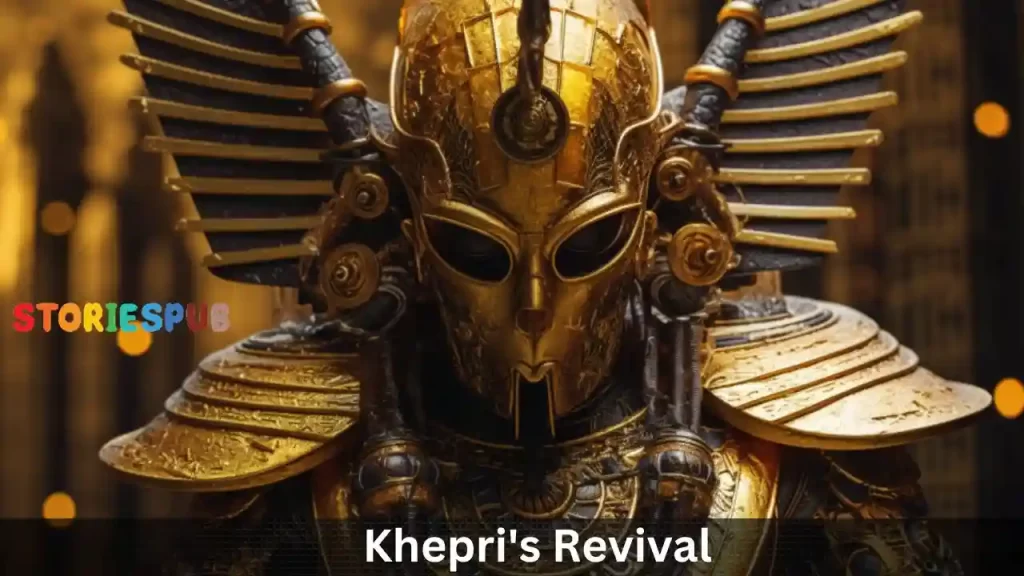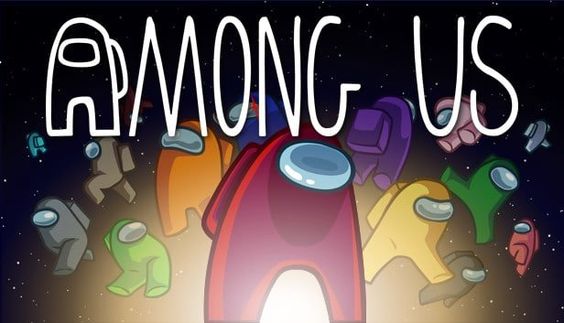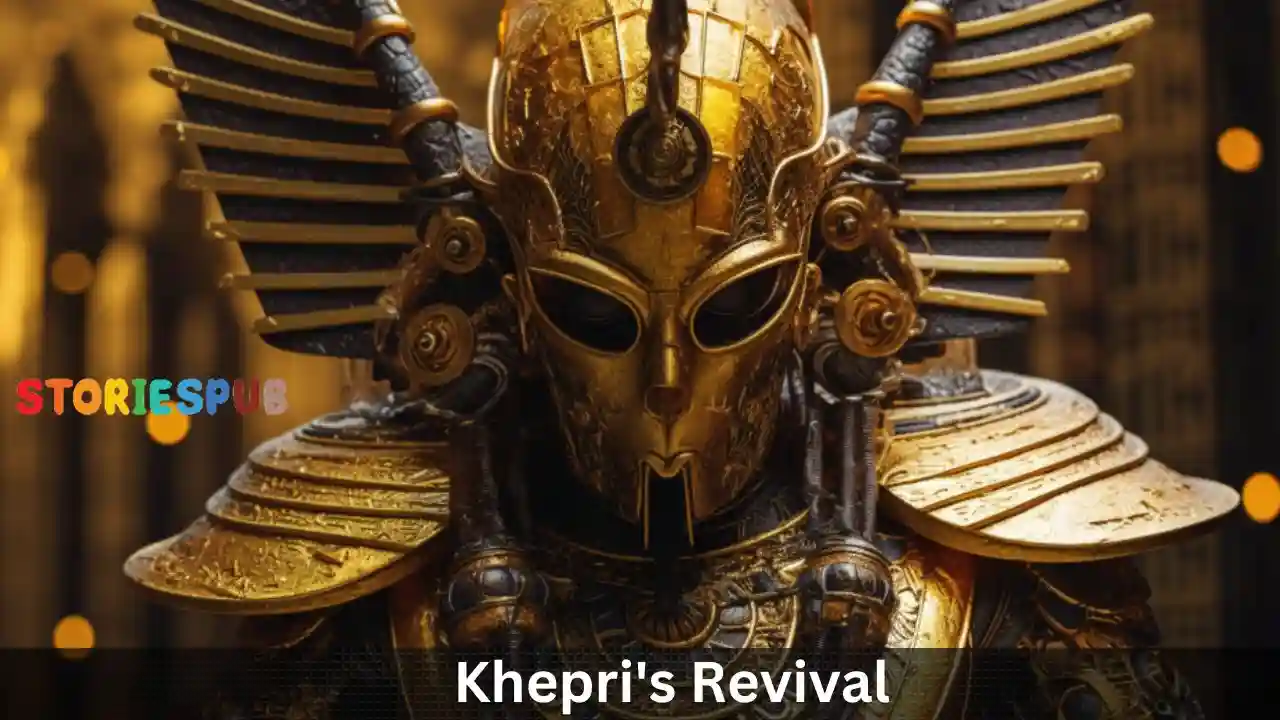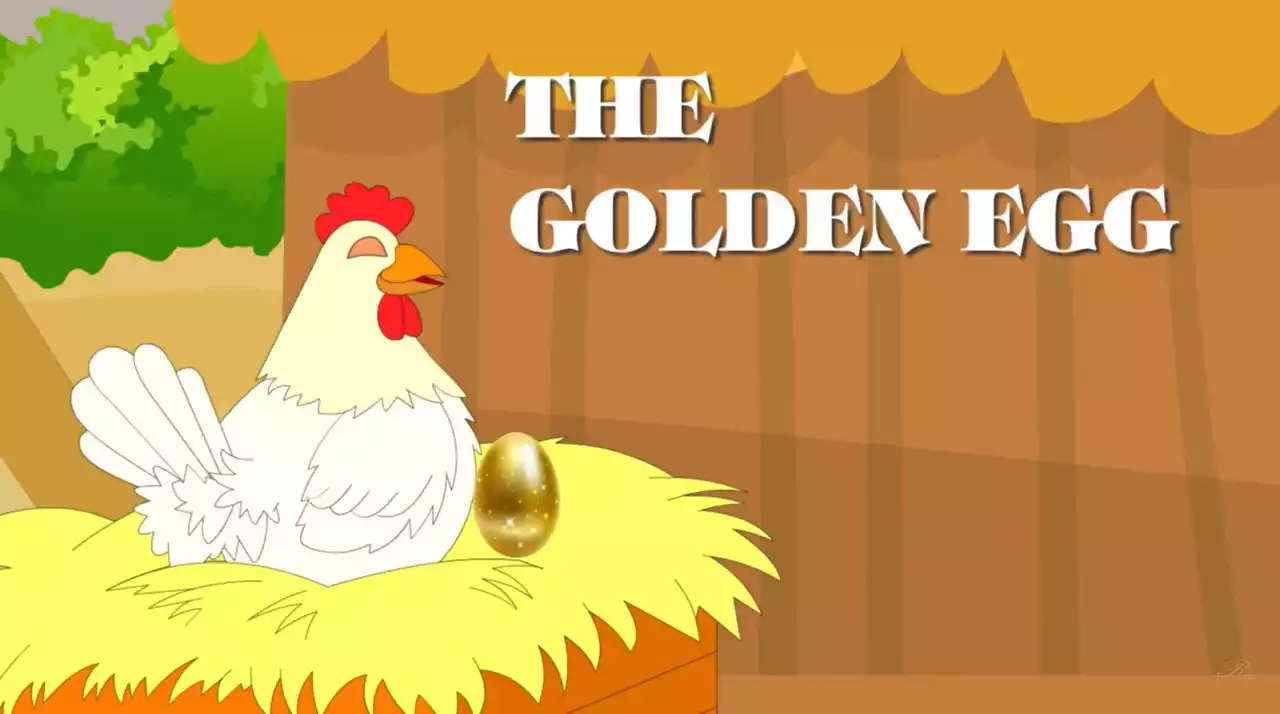Khepri – The Scarab God of Renewal & Rebirth

Introduction
Ancient Egyptian mythology is one of the most fascinating subjects in history. Their beliefs and customs have been explored by scholars for centuries, yet they still remain shrouded in mystery. One of the most intriguing figures in this pantheon is Khepri, the god of rebirth and renewal.
This deity is often depicted as a scarab beetle, a symbol that was deeply significant to the ancient Egyptians. The civilization of ancient Egypt lasted for thousands of years, and their mythology evolved over time.
It was influenced by many different factors, including their environment, political climate, and interactions with other cultures. Their religion was polytheistic, meaning that they worshipped multiple gods and goddesses who each had their own unique powers and responsibilities.
These deities were often depicted in art and architecture throughout Egypt. Khepri was one such deity who played an important role in Egyptian mythology.
He was associated with creation, transformation, and new beginnings. According to legend, he was responsible for rolling the sun across the sky each day like a giant scarab beetle pushing a ball.
The Legend of Khepri
The story of Khepri’s origins varies depending on which version you hear. One popular myth states that he emerged from a lotus flower that grew out of the primordial waters at the beginning of time.
Another version claims that he hatched from an egg laid by a cosmic goose. Regardless of how he came into being, Khepri quickly established himself as an important figure in ancient Egyptian mythology.
He was closely associated with Ra, the sun god who represented creation and life-giving energy. Khepri’s role in the creation myth of ancient Egypt is particularly interesting.
According to legend, he was responsible for creating himself by transforming from a lifeless object into a living creature. This act of self-creation was seen as symbolic of the cycle of death and rebirth that was central to Egyptian beliefs about the afterlife.
As a scarab beetle, Khepri was also associated with fertility and regeneration. The ancient Egyptians believed that these insects could emerge fully formed from the bodies of dead animals or even from piles of dung, which they viewed as a potent symbol of rebirth.
The Symbolism of Khepri
The scarab beetle was an important symbol in ancient Egyptian culture, and it had many different meanings depending on context. It was associated with the sun god Ra, who was believed to travel through the underworld each night before being reborn each morning. The scarab beetle represented this cycle of death and rebirth, as well as fertility and regeneration.
Khepri embodied these ideas in his role as a god of transformation and renewal. He represented new beginnings and fresh starts, whether in this life or in the afterlife.
The image of him pushing the sun across the sky each day symbolized not only his power over time but also his ability to bring light into darkness. Another interesting aspect of Khepri’s symbolism is his connection to Ra.
As both a scarab beetle and a sun god, he embodied two powerful forces in Egyptian mythology: transformation and energy. This made him an important figure in rituals related to death and rebirth, such as mummification and funerary rites.
The Legacy of Khepri
Despite being an ancient deity from an extinct civilization, Khepri’s influence can still be felt today. His symbolism has been appropriated by modern artists and designers, who often use the image of the scarab beetle in jewelry, clothing, and other decorative items.
Some people even get scarab beetle tattoos as a symbol of rebirth and renewal. Throughout history, Khepri has also been an inspiration for many artists and writers.
His story is both timeless and universal, speaking to our human desire for transformation and renewal. Whether we are facing a major life change or simply seeking to find meaning in our daily lives, Khepri’s message is as relevant today as it was thousands of years ago.
Conclusion
Khepri may be a lesser-known deity in the pantheon of ancient Egyptian mythology, but his influence is undeniable. As the god of rebirth and renewal embodied in the form of a scarab beetle, he represents one of humanity’s most fundamental desires: to transform ourselves into something new. Whether through personal growth or spiritual enlightenment, we can all learn something from Khepri’s story.
The Legend of Khepri
From Infant to Scarab Beetle: The Story of Khepri
According to ancient Egyptian mythology, Khepri was believed to have emerged from the primordial waters of Nu, or chaos. Initially, he was depicted as a child – an infant who represented the idea of creation and new beginnings.
Over time, however, this representation evolved into that of a scarab beetle. The story goes that Ra, the sun god and creator deity in ancient Egyptian mythology, would travel across the sky each day on his solar barge.
As he traveled through the underworld at night, it was believed that he needed protection from various threats. While in this underworld realm, Ra would transform into Khepri – a powerful scarab beetle who had the strength and determination to navigate through even the darkest depths.
Khepri’s Role in Creation Mythology
Khepri’s transformation from an infant into a scarab beetle held great significance within ancient Egyptian creation mythology. The story goes that Khepri would roll a ball of dung across the horizon each day – symbolically representing how Ra rode across the sky with power and purpose.
In addition to his role in protecting Ra during his travels through the underworld each night, Khepri was also associated with rebirth and renewal. This is because it was believed that he represented renewal not only at dawn when Ra emerged anew each day but also during cycles such as seasonal changes.
How Khepri Was Worshipped by Ancient Egyptians
Khepri played an important role in ancient Egyptian religion and was worshipped by many throughout history. He even had his own temple – located at Heliopolis, which was dedicated specifically to him.
One way in which Khepri was worshipped involved creating small statuettes in his image out of clay or other materials. These statuettes would be placed in tombs or shrines, where it was believed that they could offer protection and guidance to the deceased.
Additionally, Khepri was often depicted on various forms of artwork such as papyrus scrolls, wall reliefs, and other decorative objects. In many cases, he was shown with Ra or other deities – emphasizing his role in creation mythology and his important position within the ancient Egyptian pantheon.
Symbolism in Khepri’s Transformation
The transformation of Khepri from an infant into a powerful scarab beetle held great symbolism within ancient Egyptian culture. It represented the idea of transformation and rebirth – reinforcing the importance of cycles and new beginnings throughout all aspects of life.
Furthermore, Khepri’s ability to protect Ra during his travels through the underworld each night speaks to his strength and determination – qualities that were greatly valued by ancient Egyptians. This symbolism reinforced their belief in the power of willpower and resilience in overcoming even the greatest obstacles.
Khepri’s Legacy
Today, Khepri may be a lesser-known deity outside of academic circles. However, his influence can still be felt throughout modern culture. For example, scarab beetles are often referenced in popular media such as movies or television shows as symbols for rebirth or renewal.
Additionally, many artists continue to draw inspiration from this ancient deity when creating their own works today. From paintings to sculptures and more – there is a lot that we can learn from this powerful figure who played an essential role in shaping ancient Egyptian mythology and culture as we know it today.
The Symbolism of Khepri
The significance of the scarab beetle in ancient Egyptian culture
The scarab beetle played a significant role in ancient Egyptian culture, with its image appearing in many forms of art and hieroglyphics. It was believed to symbolize the sun god Ra, as well as the process of rebirth and renewal. The beetle’s habit of rolling balls of dung across the ground was also seen as a symbolic representation of the sun being rolled across the sky.
The Egyptians also believed that the scarab beetle had special powers, such as protecting against evil spirits and providing good luck. They often placed amulets or other representations of the beetle on their bodies or in their tombs to ensure safe passage into the afterlife.
How Khepri represented rebirth and renewal in Egyptian mythology
Khepri represented rebirth and renewal in Egyptian mythology through his association with sunrise and new beginnings. As a scarab beetle, he embodied the idea of transformation and growth, emerging from his cocoon as a fully formed adult.
This symbolism was often used in funerary art to represent resurrection or reincarnation. Khepri’s connection to sunrise also reinforced his role as a symbol of new beginnings.
The ancient Egyptians believed that every morning, Khepri would roll Ra’s disk across the sky to start a new day. This act was seen as representative of both physical and spiritual rebirth.
The connection between Khepri and the sun god Ra
Khepri’s link with Ra extended beyond his role as Ra’s “morning form.” In some stories, Khepri is portrayed as Ra’s creator or even Ra himself in an alternate form. This close relationship between two important deities reinforces Khepri’s importance within ancient Egyptian theology.
The idea that Khepri represented the birth of the sun and Ra represented its full power also reinforced the idea of renewal and growth. This idea was incorporated into many aspects of Egyptian culture, including architecture, art, and even daily rituals.
The scarab beetle in Egyptian art
The scarab beetle was a popular subject in ancient Egyptian art, appearing in everything from sculptures to amulets. In some cases, the beetle’s image would be combined with other symbols to create a more complex meaning. For example, a scarab holding an ankh symbolized both rebirth and eternal life.
In addition to being depicted as a physical object or symbol, the scarab beetle was also used in hieroglyphics to convey specific meanings. The glyph for “to become” featured a scarab pushing a ball of dung across the ground, symbolizing transformation and growth.
Lingering influence on modern culture
Khepri’s symbolism has continued to fascinate people throughout history. In modern times, his image has been used in everything from jewelry designs to tattoo art. Many people are drawn to Khepri’s message of renewal and rebirth, finding inspiration in his story as they face their own personal challenges.
The use of beetles as symbols for transformation is not exclusive to ancient Egypt either: they appear across cultures around the world. By studying Khepri and his role within ancient Egyptian mythology, we can gain insight into how we view transformation today – both spiritually and physically – and how it continues to shape who we are as individuals.
The Legacy of Khepri
Relevance in Modern Culture
The symbolism of Khepri, the god of rebirth and renewal, has continued to influence modern culture in various ways. Many people across the world still find inspiration from this ancient deity. For instance, in psychology, Khepri’s symbolism is relevant when discussing personal transformation and growth.
The beetle’s ability to roll a ball of dung and emerge from it relates to how individuals can transform their lives and overcome obstacles. Furthermore, the use of scarabs as amulets became increasingly popular during the New Kingdom period.
The scarab beetle symbol was believed to provide spiritual protection as well as controlling or warding off evil forces. Today, many people still wear jewelry with scarab designs or tattoo these designs on their skin.
Depiction by Artists Throughout History
As one of the most important deities in ancient Egypt, many artists throughout history have depicted Khepri in their art. Egyptian artists often portrayed Khepri’s image on tombs or other funerary objects such as vases or coffins. The god was often represented by a golden beetle with wings extended over an image of the sun disk.
In modern times, artist Salvador Dali created a sculpture called “The Persistence of Memory,” which features melting watches draped over a melting branch that resembles a scarab beetle. This surrealistic work showcases the influence that Egyptian mythology has had on modern art.
Inspiration for Spiritual Growth
Khepri’s symbolism holds powerful lessons for people today seeking spiritual growth and personal transformation. In addition to representing rebirth and renewal, Khepri also symbolizes self-generation – an idea that we can change ourselves whenever we want to become better versions of ourselves.
People today can also be inspired by Khepri’s resilience and determination compared with the beetle’s ability to persevere through hardships. This symbolism can guide people who are going through a difficult time and give them hope for a bright future beyond their current struggles.
Khepri’s Connection to Ra
Khepri’s connection to the sun god Ra is another important aspect of his legacy that has influenced modern culture. In ancient Egypt, Khepri was considered one of the aspects of Ra and was often depicted with the sun disk on his head. The scarab beetle is also associated with the rising sun because it rolls its ball of dung in a similar way to how the sun rises from the horizon each day.
Today, Khepri’s association with the sun god Ra is still relevant in pop culture. For example, in popular video games such as “Assassin’s Creed: Origins,” Khepri appears as an NPC (non-playable character) associated with Egyptian mythology, and many comic book stories feature Khepri or other scarab-themed characters.
Conclusion
Overall, Khepri’s symbolism has had a lasting impact on many aspects of modern culture – from psychology to art and spirituality. The scarab beetle’s story represents self-generation, resilience and personal transformation in ancient Egyptian mythology. Today, people can continue to find inspiration from this ancient deity’s story for their own lives or interests by understanding what it means to become better versions of ourselves while maintaining our perseverance through life’s hardships.
Conclusion
Recap of why Khepri is an important figure in Egyptian mythology
In ancient Egyptian mythology, Khepri was a symbol of rebirth and renewal. He represented the idea that new life springs from death and decay. As the scarab beetle, he was also associated with the sun god Ra and his daily journey across the sky.
The ancient Egyptians believed that Khepri helped to push Ra’s boat through the underworld during his nightly journey, ensuring that he would rise again each morning. Khepri’s importance in Egyptian mythology can be seen in his prominent role in creation stories and funerary rituals.
According to one creation myth, Khepri emerged from the primordial waters of chaos to form a mound of earth, which became the first land on earth. In funerary rituals, scarab amulets were often placed on mummies or buried with them to ensure safe passage into the afterlife.
Final thoughts on what we can learn from this god’s story
Khepri’s story teaches us about the cyclical nature of life and death, and how new beginnings can emerge from even the darkest times. It reminds us that change is inevitable but necessary for growth and renewal.
We can find inspiration in Khepri’s example as we face our own challenges and struggles. Additionally, Khepri serves as a reminder of our connection to nature and its cycles.
He represents how all living things are interconnected and dependent on each other for survival. In today’s world where we often feel disconnected from nature, it is important to remember this interdependence so that we may take better care of our planet.
Khepri may be an ancient deity but his teachings still hold relevance today. By embracing change as a necessary part of growth and recognizing our connection to nature, we can learn valuable lessons from this god of rebirth and renewal.
Hey kids, how much did you like Khepri – The Scarab God of Renewal & Rebirth ? Please share your view in the comment box. Also, please share this story with your friends on social media so they can also enjoy it, and for more such Egyptian Mythology, please bookmark storiespub.com.
Related Post :
Khepri FAQ
Why is Khepri associated with a scarab beetle?
Khepri is associated with the scarab beetle due to the insect's behavior of rolling dung into a ball, symbolizing the daily movement of the sun.
How was Khepri worshipped in ancient Egypt?
Khepri was worshipped through prayers, offerings, and dedicated temples that featured images of the scarab beetle.
Were scarab amulets popular in ancient Egypt?
Yes, scarab amulets were popular in ancient Egypt, symbolizing protection, resurrection, and transformation.
What is the meaning behind Khepri's name?
Khepri's name comes from the Egyptian word "kheper," which means "to transform" or "to come into being."
Is Khepri mentioned in the Book of the Dead?
Yes, Khepri is mentioned in the Book of the Dead as a guide for the deceased through the afterlife, ensuring their rebirth.
How is Khepri related to the other sun gods in Egyptian mythology?
Khepri is closely related to Ra and Atum, who represent different aspects of the sun – the midday sun and the setting sun, respectively.
Were there any major temples dedicated to Khepri?
While there were no major temples solely dedicated to Khepri, his imagery and worship were integrated into temples of other sun gods.
How has Khepri's symbolism influenced modern culture?
Khepri's symbolism of renewal and transformation has inspired various art forms, jewelry designs, and even tattoos in modern culture.
























